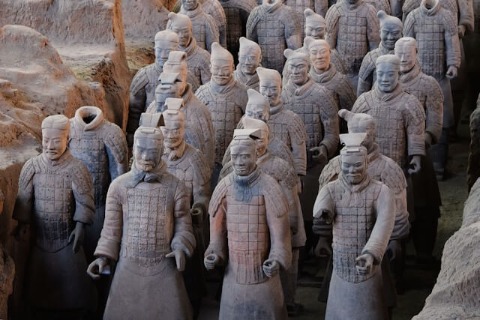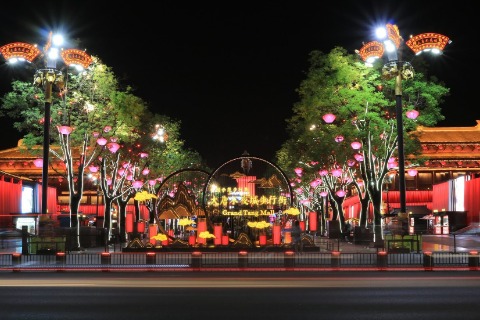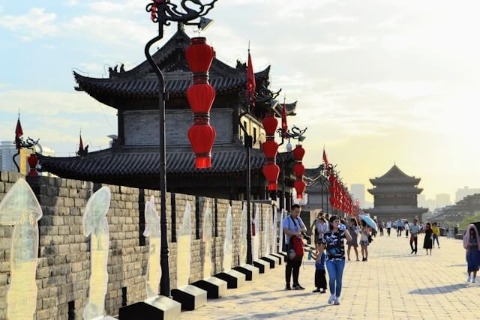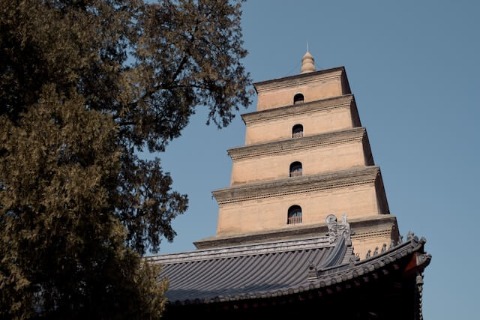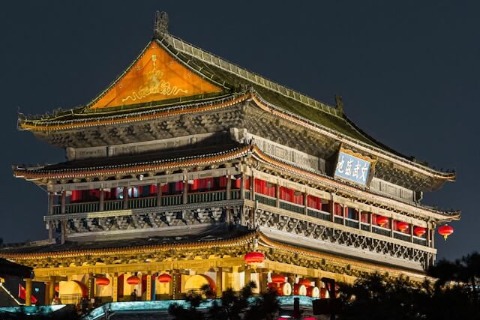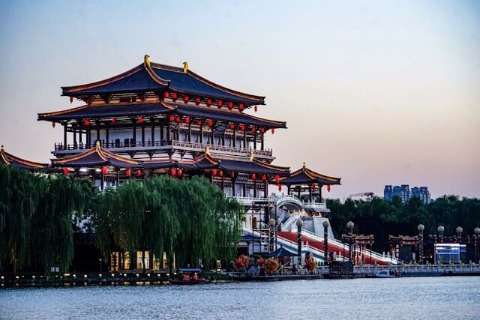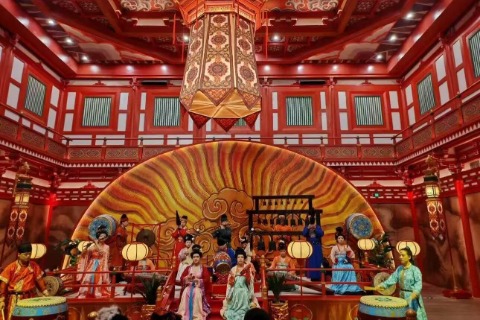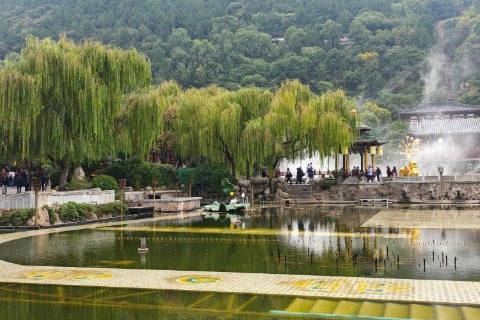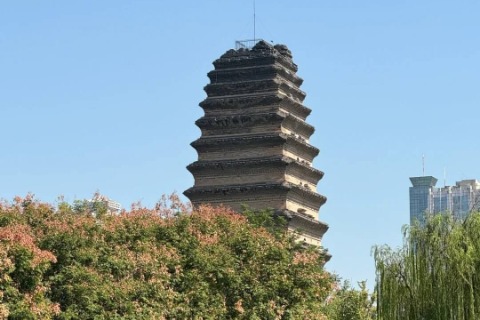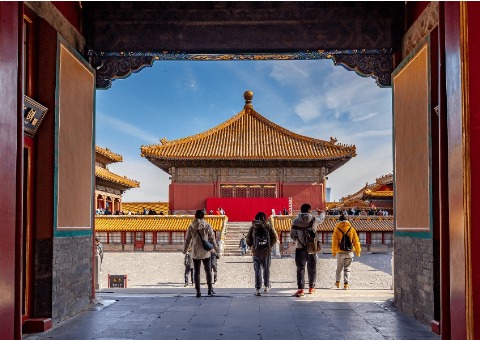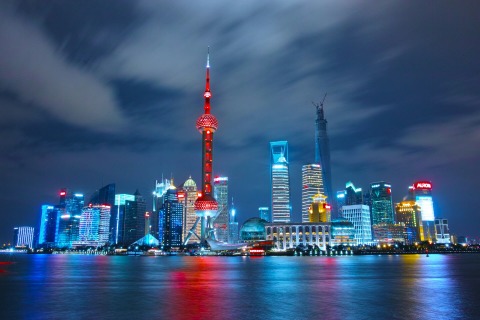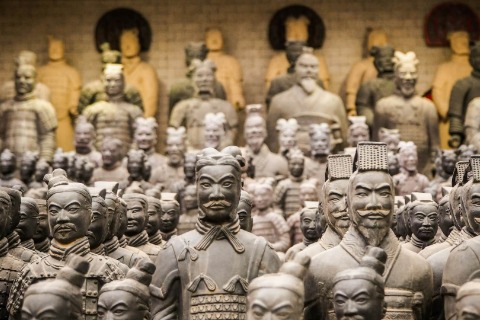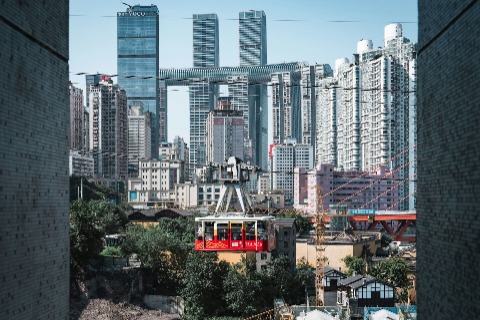Giant Wild Goose Pagoda
It is the oldest and largest square brick tower of its kind in China that still exists today
The Big Wild Goose Pagoda(Chinese Name: 大雁塔) is located within the Daci’en Temple and is a famous Buddhist structure from the Tang Dynasty. It is the oldest and largest square brick tower of its kind in China that still exists today. Daci’en Temple was the most renowned and magnificent Buddhist temple in the Tang Dynasty capital of Chang’an(ancient Xi’an), built under the decree of the imperial family. The pagoda was overseen by Xuanzang himself, making Daci’en Temple a significant site in the history of Chinese Buddhism, receiving considerable attention from both domestic and international Buddhist communities.
The Giant Wild Goose Pagoda is right next to the Great Tang Ever Night City. You can explore the pagoda in the evening and then head over to Great Tang Ever Night City to enjoy the beautiful night views of Xian.
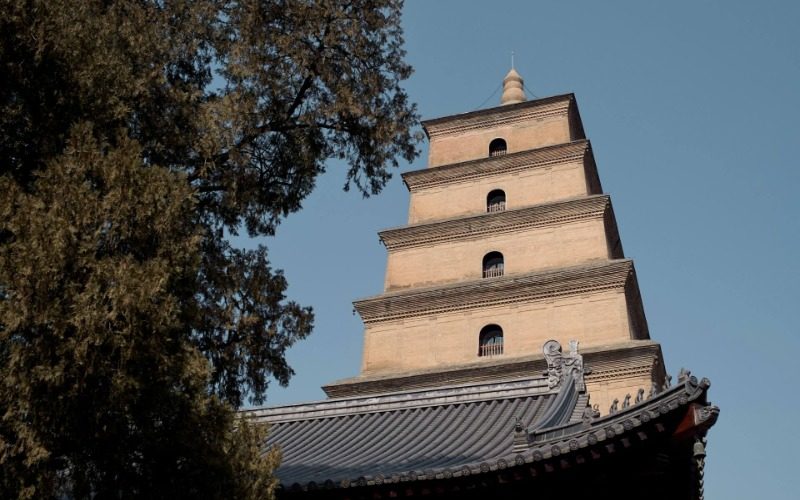
Table of Contents
Highlights of the Giant Wild Goose Pagoda
Da Ci'en Temple Ruins Park (Former Da Ci'en Temple) (Chinese name: 大慈恩寺遗址公园)
Da Ci’en Temple Ruins Park is located east of the original Da Ci’en Temple site. The park, built on these historical ruins, features numerous historical artifacts and exquisite sculptures. It’s also a fantastic place to enjoy various flowering plants. Here, you can truly experience the prosperity of the Tang Dynasty and the rich depth of Buddhist culture.
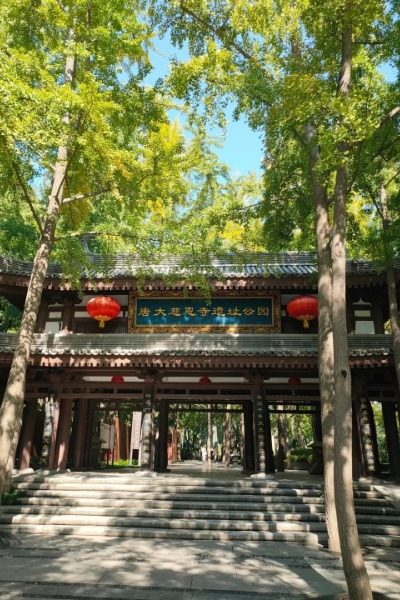
Daci'en Temple (大慈恩寺)
Daci’en Temple is the most famous and grand Buddhist temple in Chang’an (ancient Xi’an) during the Tang Dynasty, boasting over 1,350 years of history. During the Tang period, Japanese monks such as Dao Zhao, Zhi Tong, and Zhi Da came to Daci’en Temple to study under Xuanzang, learning about the Consciousness-Only School and helping to promote it in Japan. Additionally, Daci’en Temple marked a new era in the history of Buddhist translation in China, as Xuanzang translated a vast number of scriptures here, significantly influencing the landscape of Chinese Buddhism.
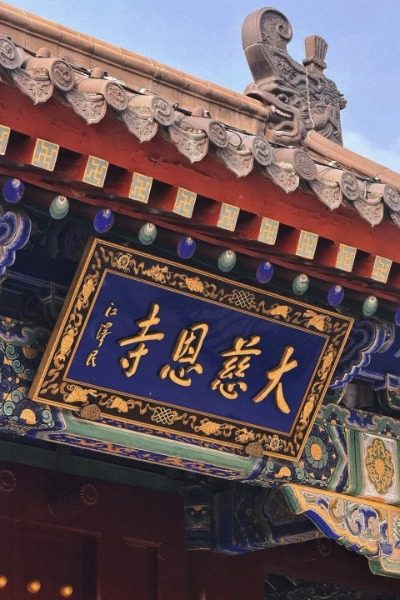
Great Wild Goose Pagoda (Dayan Pagoda) (大雁塔)
The Giant Wild Goose Pagoda is not only a landmark in Xi’an but also a national symbol of China, attracting countless visitors. Originally overseen by Master Xuanzang, the pagoda was built to house the Buddhist statues, relics, and Sanskrit scriptures he brought back from India. The construction showcases the architectural techniques and artistic excellence of the Tang Dynasty. Initially five stories high, it was later renovated and now stands at seven stories. The outer walls are adorned with intricate reliefs that reflect Tang art styles and Buddhist stories. From the top, you can enjoy stunning views of Xi’an, especially at night when the lights create a serene and peaceful atmosphere.
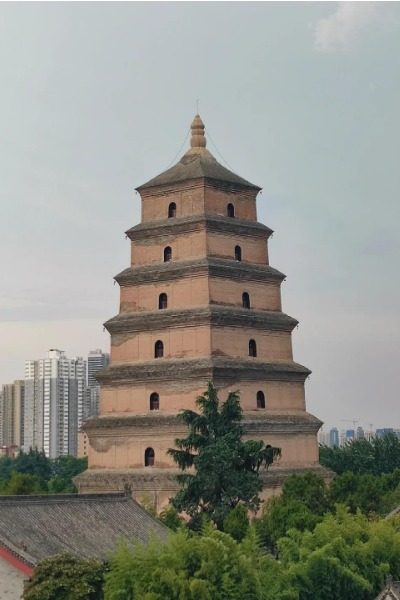
Mahavira Hall (大雄宝殿)
The Mahavira Hall is one of the most important buildings in the Daci’en Temple. The term “Mahavira” is a respectful title for the Buddha, symbolizing the immense power of Shakyamuni Buddha to overcome all troubles and demons. In the center of the hall, there is a statue of Shakyamuni Buddha, with his disciple Yejia on the east side and another disciple, Ananda, on the west. The hall also features statues of Manjushri and Samantabhadra Bodhisattvas on either side. The walls on both sides are adorned with images of the Eighteen Arhats, showcasing the rich connotations of Buddhist culture and its deep historical roots.
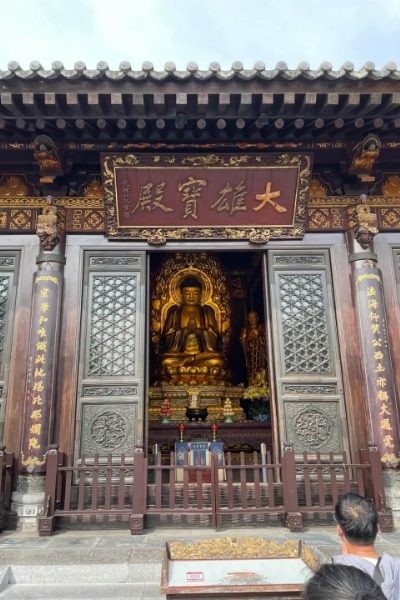
Red Walls (红墙)
The Red Walls, part of Daci’en Temple, attract visitors eager to take photos thanks to their unique color and historical background. Under the sunlight, the walls appear incredibly vibrant, creating a romantic vibe. You can pose in front of the Red Walls, with the towering Big Wild Goose Pagoda behind them, making you feel as if you’ve stepped back into ancient China.
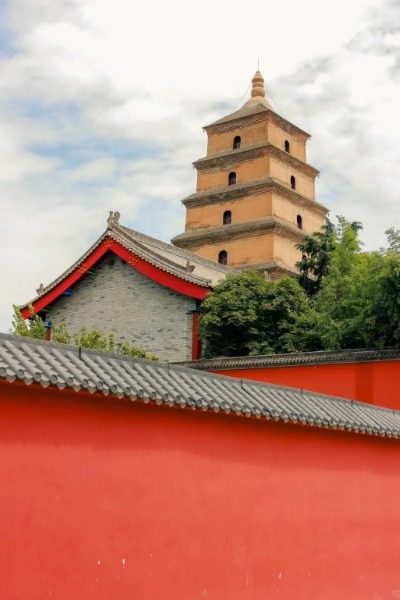
Statue of Xuanzang (玄奘像)
The statue of Xuanzang outside Daci’en Temple in Xi’an honors this great Buddhist translator and traveler. Xuanzang was a famous monk during the Tang Dynasty, known for his legendary journey to the West to retrieve sacred texts. If you’re familiar with Journey to the West or enjoy playing Black Myth: Wukong, you’ll know that Xuanzang is the master of the character Sun Wukong. He worked on translations at Daci’en Temple for 19 years, translating 75 texts, including the renowned Great Tang Records on the Western Regions. This work documents the customs and experiences he encountered in the countries he visited, leaving a valuable religious and cultural legacy for future generations.
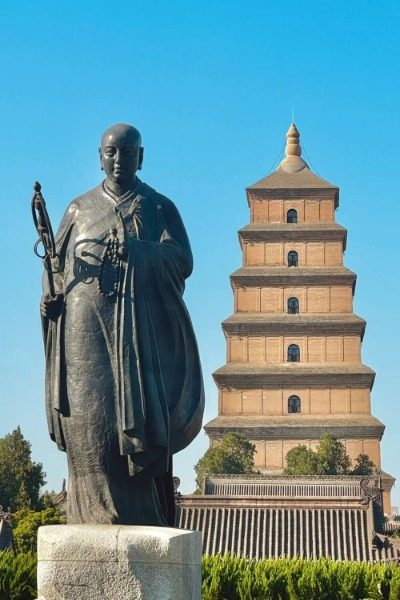
Practical Travel Tips
- If you want to climb the Giant Wild Goose Pagoda, make sure to buy the Daci’en Temple ticket first, then get the pagoda ticket! The Big Wild Goose Pagoda is inside Daci’en Temple, but they have separate tickets.
- The best time to visit is in the evening. When the sunset casts a golden glow on the pagoda, it’s simply enchanting. At night, the pagoda is beautifully illuminated, offering a different kind of stunning view.
- You can start your visit from the southern square of the Big Wild Goose Pagoda, where there’s a grand statue of Xuanzang that reminds you of his arduous journey to the West. Walking north from the square, you’ll reach the main entrance of Daci’en Temple.
Hours and Fees
Hours
- Daily from 8:30 AM to 6:00 PM
Admission
- The ticket for Daci’en Temple is 40 CNY (about $5.50). An additional 25 CNY (about $3.50) is required to climb the Giant Wild Goose Pagoda.
How to Get to Giant Wild Goose Pagoda
By Bus
- You can take buses 5, 19, 21, 22, 23, 24, 27, 30, 34, 41, 44, 224, or 242 to the Dayanta Station. From there, it’s a short walk to Daci’en Temple.
By Subway
- You can take either Line 3 or Line 4 of the subway to Dayanta Station(大雁塔站). After exiting the station, it’s just a short walk to Daci’en Temple.

